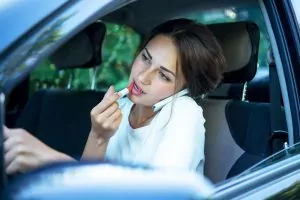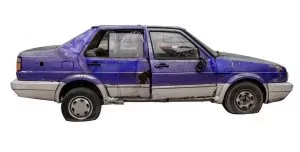The teenage years, from 13 to 19 years old, make up less than 1% of the total deaths in this country. Most people aren’t surprised by the answer they get when they ask, “What is the number one killer of teenagers in the U.S.?” The answer is, by far, car accidents.

Most of us have heard from the time we were teens ourselves that teenagers are the worst drivers. Insurance companies drive the fact home by charging significantly more on insurance premiums when you have a teen that drives. But teens on the low end of the age scale don’t drive at all. To really understand the cause of teen fatalities, you have to break down the statistics a little bit more.
What Is the Number One Killer of Teenagers? Male Vs Female
The Centers for Disease Control (CDC) includes 12-year-olds in their statistics for teenage deaths. At the age of 12, males are 46% more likely to die than females. The percentage of deaths increases for every additional year through the age of 19 years. For males, the percentage increase is 32% while it is 19.5% for females. That means males are more likely to be killed than females from the time they are 12 until they are 19.
This statistic surprises some people, thinking that teens would decrease their risk of fatalities with increased driving time. The reason it works in the opposite direction is that teens become less afraid as they get more driving time under their belts. Their skill levels don’t necessarily increase at the same level as their confidence. They are more likely to make mistakes than they were when they were new to the roads and more cautious.
Even among those who are old enough to drive, some deaths are attributed to other causes. The top five killers of teenagers include:
- Auto Accidents
- Homicide
- Suicide
- Cancer
- Heart Disease

A look at the five leading killers of people of all ages gives you a clearer picture of just what these statistics mean:
- Heart Disease
- Cancer
- Lower Respiratory Disease
- Auto Accidents
- Stroke
Top 5 Reasons for Teen Car Accidents
The significance of car accidents as the leading killer of teens can’t be denied. While those younger than 15 and a portion of those who are 16 and above are killed as passengers in vehicles or from a completely different cause, teen drivers are definitely at a higher risk of being in a fatal accident. The question is, why?
– Driver Inexperience
There’s no substitute for experience. Teens typically spend the required number of hours driving with a permit and accompanied by a licensed driver. They may or may not spend time in a driver’s education class, depending on the state where they live. Most teens get their licenses after only a few months of driving. That’s when they face some experiences that they haven’t had before. They may have to drive alone in hazardous road conditions or at night on unmarked roads. These conditions are more challenging to them than to an experienced driver.
– Driving While Intoxicated
Driving under the influence of alcohol or drugs is a mistake for any aged driver. For an inexperienced teenage driver, it’s even more dangerous. Those two factors combined greatly increases their risk of being in a wreck. It also makes them more likely to get into the car with another teen who has been drinking.
– Reckless Driving
Teens often enjoy the thrill that comes from driving fast and careless. Sometimes they end up with a speeding ticket or two or have an accident that helps get them on track. Too often, they don’t get caught until they have a serious wreck. Speed plays a role in a large number of teen fatal accidents, with males taking the lead overall. It isn’t just speeding either. Switching lanes incorrectly, racing through changing traffic lights, failing to stop at stop signs, and racing other cars are some of the reckless driving habits common among teens.
– Driving with Other Teens in the Car
Driving with their peers as passengers presents a distraction that makes it hard for teenagers to focus on the road. A conversation with their friend can double the odds of an accident happening. The more teenagers there are in the car, the more distracting it is.
– Distracted Driving

In spite of their limited driving skills, teens often think that they are exceptional drivers. They also think that distractions won’t have any impact on their driving ability. The reality is that distracted driving of any kind is known to lead to fatal car crashes. While texting and driving have become a major concern for parents, this isn’t the only kind of distracted driving to worry about. Talking on the phone, adjusting the radio, or listening to passengers are just some of the ways teens take their mind off the road. It only takes a few seconds for a distraction to lead to a crash.
Another type of distracted driving is driving while fatigued. If your teen was up late the night before studying, a few minutes behind the wheel is all it takes to lull them to sleep. Driving for extended periods can also lead to road hypnosis, letting them doze off without realizing how tired they are. Make sure your teen is well-rested before they ever leave the house.
What Teens Have to Say
A research study conducted by Safe Kids Worldwide of 1,000 teens aged 13 to 19 reported that one in four teens don’t use a seat belt every time they’re in a car. Another 39% said they’ve ridden with a teen driver who was texting. A large number of kids said they didn’t say anything when riding with someone they felt was driving dangerously.
What Is the Number One Killer of Teenagers Globally?
You might assume the large number of teens who die in car accidents is strictly an American problem. It turns out that the same is true around the world. The main difference is that the age where boys are most likely to be killed in a car accident starts at 10 years old. Knowing that parents are worrying about their teens around the world does little to make the situation more tolerable for parents in the States.
What Can Parents Do to Keep Teen Drivers Safer?
Drivers’ education and safety training classes can only do so much to make teens better drivers. Parents, on the other hand, have as much time as they want to work with their teens. Below are some tips on how to prepare your teen driver for when he/she is on the road alone.
- Make Buckling Up a Steadfast Rule – No exceptions, even if you’re just driving across the street. It helps reduce the impact even if they are in a crash. Set a good example. Buckle up every time you get in the car whether you’re driving or riding as a passenger. Don’t budge or allow them to drive until everybody in the car is securely buckled. It’s easier if they’ve always buckled up from the time they were in their car seats. Even if they haven’t, you can turn it into a habit.
- Get An App to Block Texting While Driving – Teens aren’t the only ones obsessed with their phones. All you have to do is look around to see that the majority of people are addicted to their cell phones. That’s why you shouldn’t take any chances that your teen will ignore the ring while driving. The simple solution is to get one of the many apps to block texting while driving for your teen’s phone. Just search and you will find a variety online including everything from free apps to top-of-the-line.
- Don’t Give Them a Junk Car – Sometimes parents pass down their old car to their teens. Other ones look for a cheap investment that won’t be much of a loss in case of an accident. Giving your teen a poor-quality car can increase their chances of having an accident. Each year, new safety features are introduced to cars. Newer models let you know when you veer out of your lane and help you stay aware of the traffic around you. The more modern safety equipment the car has, the farther the car will go to help your teen drive safer.

Some apps let your callers see in real-time where you are and when they can expect you to arrive. Your teen may not love the idea, but it could be the one app that saves their life.
- Make a No Tolerance Policy for Impaired Driving – That means no drinking or using any substance prior to driving. The first time they break the rule, their license is suspended. Knowing that you mean business will be more of a deterrent than the thought of a crash.
- Don’t Let Them Carry Passengers without Your Approval– Limit their passenger list to one or two passengers that you know. Some teens provide more of a distraction than others.
- Log a Lot of Hours with Them – Take them out during different times of the day and night. Expose them to a wide range of driving experiences. The best time to learn to drive on a slippery road or in heavy traffic is when you are by their side.
- Talk to Them About Riding With Other Teens – Your teen doesn’t have to be the one behind the wheel to be at risk. Talk honestly about the statistics and the factors that contribute to teen fatalities. Explain that they should never ride with another teen or any adult who has been drinking. Give them a plan of action whether it’s calling you or their other parent. Make sure they have a safe way out when they get in a sticky situation.
- Teach Them What to Do If They Are in An Accident
Now that you know the answer to “What is the number one killer of teenagers?” your primary goal is probably to keep your teen from being in a fatal accident. Ideally, you don’t want them to be in any accident at all. But even a minor fender bender can leave them confused about what they need to do next.
First of all, tell them not to panic. The impact of an accident can make it difficult to focus. They need to try to keep a clear head and think about what they say and do. The first thing is to make sure that no one is hurt and call for medical help if they are. They should never admit guilt for an accident or say that they aren’t injured. Some injuries don’t show up until later.
Now that their car isn’t in motion, they should be able to use their phone to take pictures. Tell them to get pics of the details of the accident and the setting. If they notice anything like skid marks in the road or loose beer bottles, make sure they get those, too. If the accident is at least partially the fault of the other driver, they may end up needing an auto accident attorney to help them get paid for their damages. Make sure your teen understands that they should never leave the scene of an accident. If the police make an accident report, they have the evidence they need to help prove fault. It will also prove that they stayed on the scene as required by law. Making an agreement with the other driver could result in their reporting them as a hit-and-run driver.
- Draw Up a Contract – Create a binding agreement between you. Give some concessions in exchange for the rules that you want to be enforced. Make them earn more time, later curfews, etc. Sign it and make them sign it too. It’s another way to let them know you’re serious about the rules you’ve laid out.
If your teen has been in an accident, you may be able to file a personal injury or a wrongful death claim. Contact Krasney Law to learn more about your rights. We can help you get the damages you deserve.



